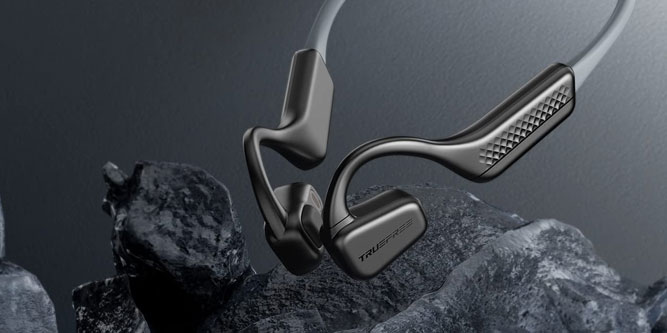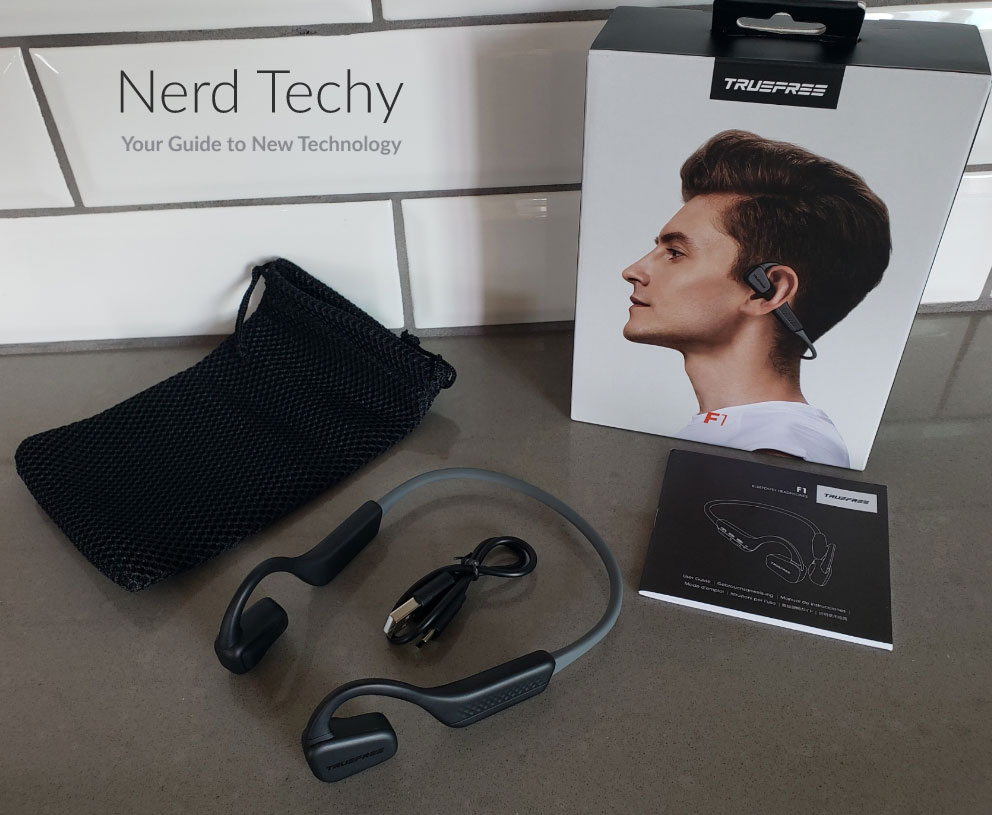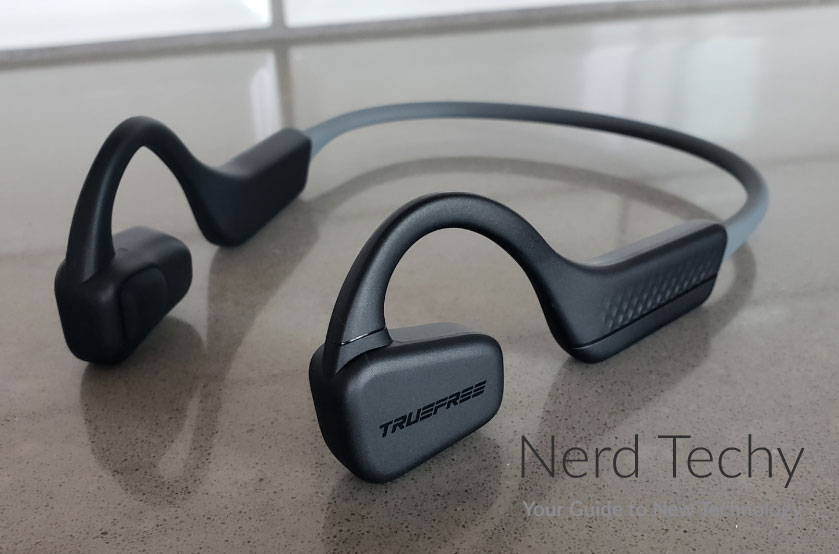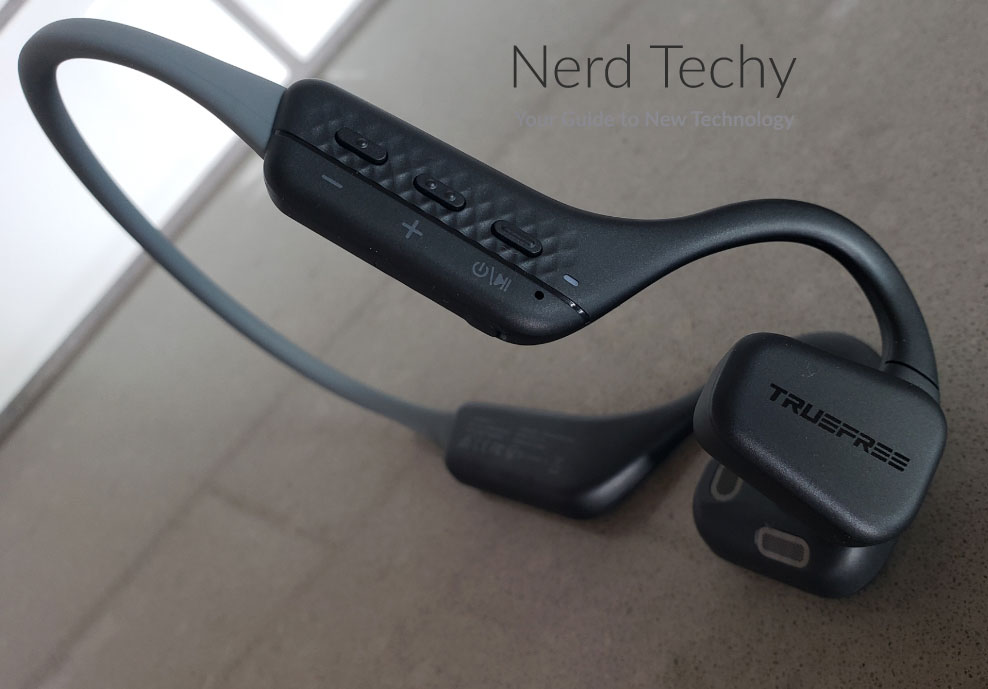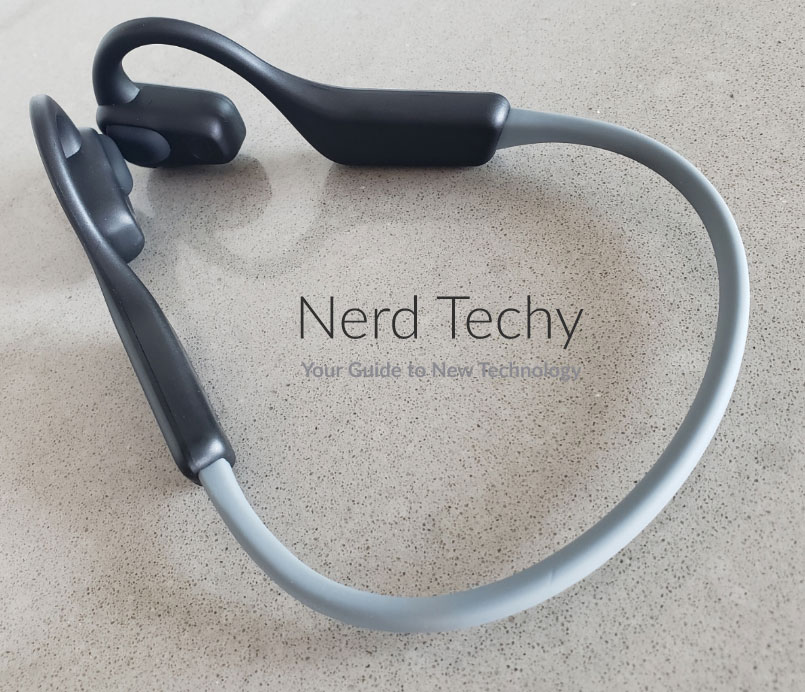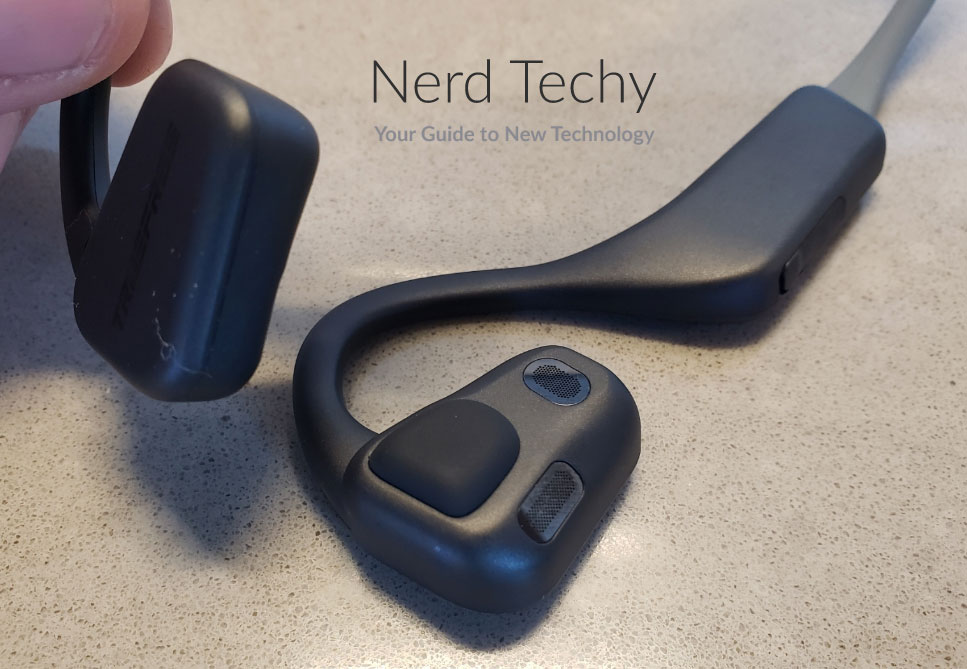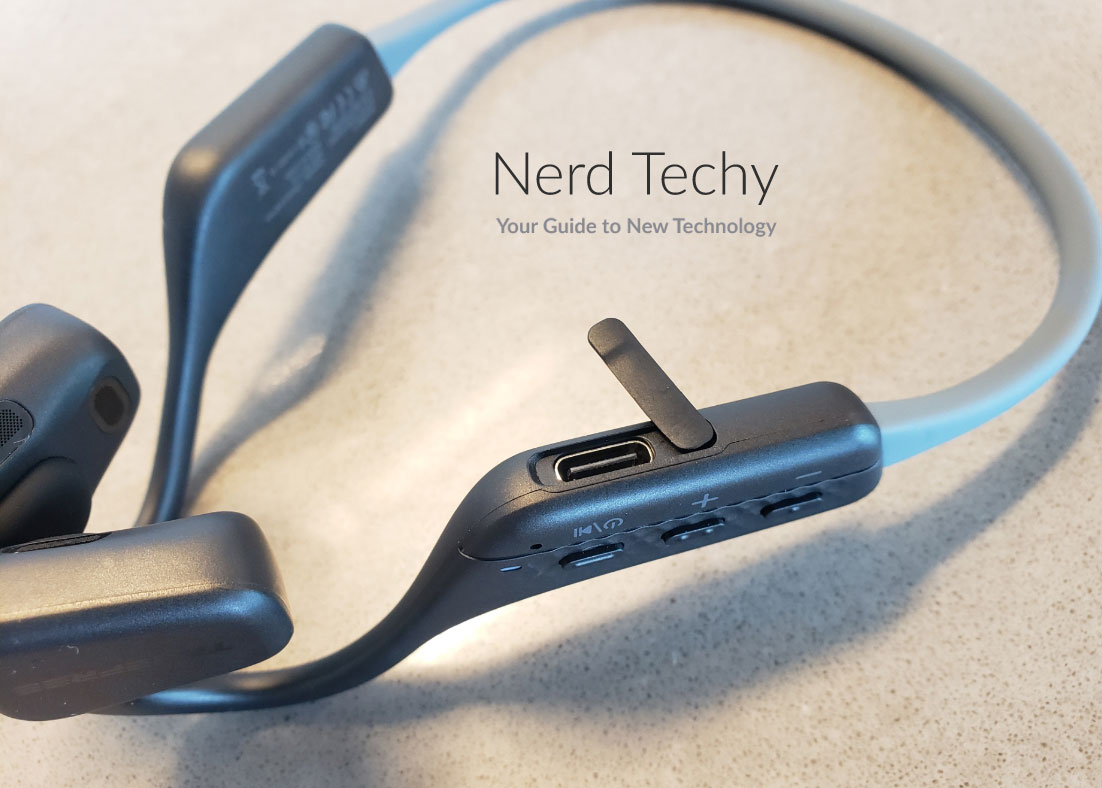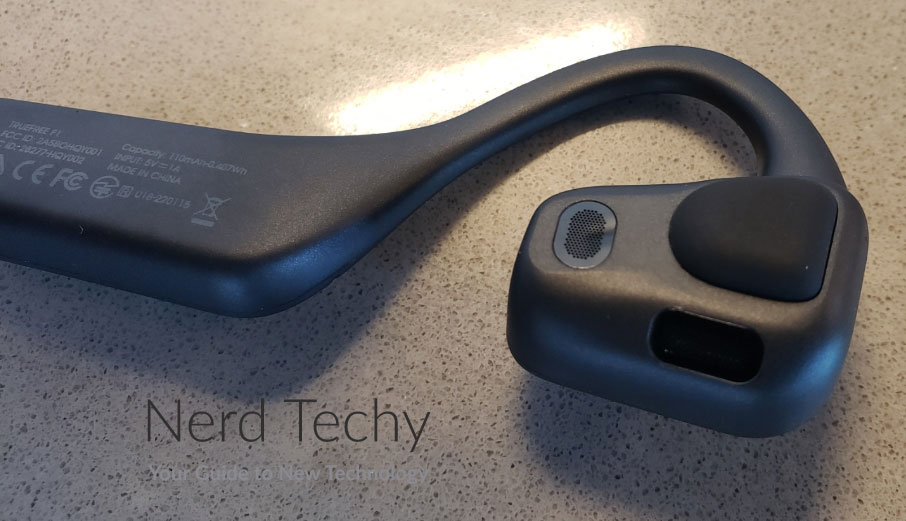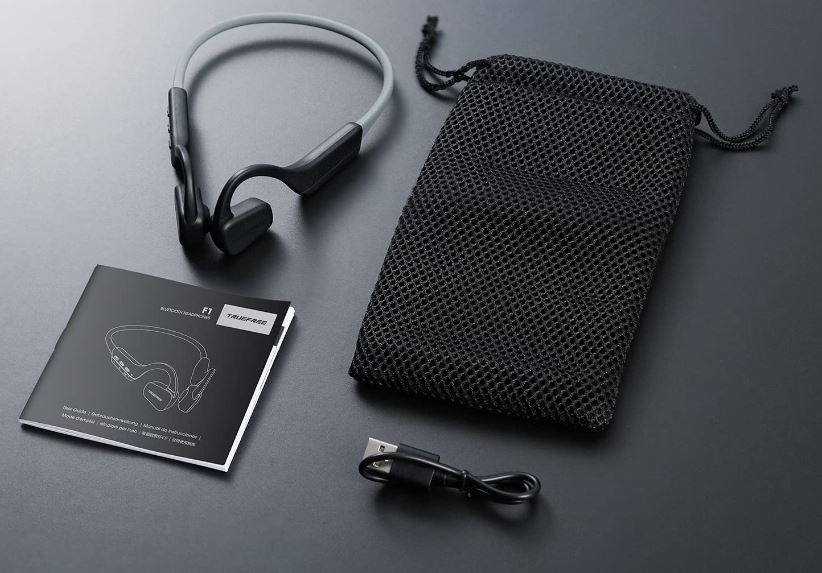These days, there’s a veritable flood of Bluetooth headphones on the market. Some of them are quite good, but most of them are generic. It can be tough to sort out what’s good from what’s bad. It can even be difficult to tell two different sets of earbuds apart. Then again, there are exceptions.
Air conduction headphones are an excellent example. They’re designed to keep your ears un-blocked, so you can hear what’s going on in your environment. It’s like having a little speakers mounted on the side of your head. If you want something entirely different from your run-of-the-mill wireless earbuds, it’s tough to do better.
Today, we’ll be reviewing the Truefree F1 Air Conduction Headphones. These headphones wrap around the back of your head and sit a slight distance outside your ears. They’re designed for the gym, for running, or for any other time you need situational awareness. But are they ideal for your lifestyle? Here’s everything you need to know about these air conduction headphones.
Design and Fitment
The Truefree F1 have a straightforward, all-in-one design. The grey frame is slightly flexible, and is designed to wrap around the back of your head. Even so, it has enough tension that it stays securely attached. Even if you’re engaging in vigorous exercise, the headphones will remain fixed to your head.
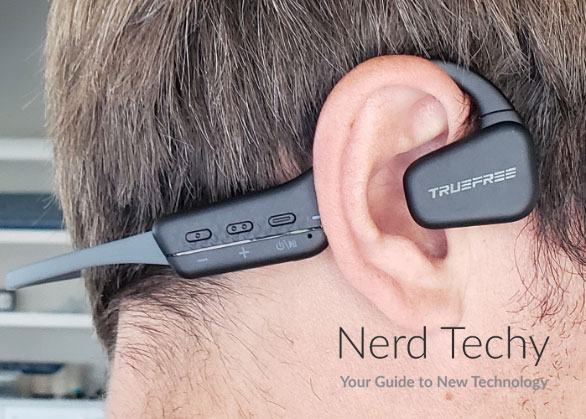
The battery compartments are black, and are broad and flat. They have an irregular quadrilateral shape, and sit against your head behind your ears. The grey band continues forward in an arch that hooks over the tops of your ears.
At the ends of the hooks are your speakers. These sit in front of your ears and extend back over them. However, they don’t actually go inside. There’s an air gap between the speakers and your ear holes, which allows you to hear outside noise.
These headphones are IP44-rated for water-resistance. They’re not submersion-proof and you can’t wash them in the sink. But they can withstand sweat or a little rain without failing. You can even wipe them clean with a damp cloth.
On the outside of the right battery housing, you’ll find a set of control buttons. Unlike with most earbuds, these aren’t soft touch controls. They’re actual buttons that click when you press them. The two buttons towards the back adjust the volume up and down. The front button is a multi-function button that answers and ends calls and plays or pauses your music. It also turns the headphones on or off altogether.
If you prefer a more traditional design, consider the Anker Soundcore Sport X10. They have an ordinary in-ear design that you’ll no doubt find more familiar. They also have a transparency mode that boosts outside noise to keep you aware of your surroundings. On the downside, the ANC mode is only in beta.
Pairing
The Truefree F1 use the latest Bluetooth 5.3 protocol. It seems like Bluetooth is constantly releasing new versions, but we really liked the quality of the connection. To begin with, Bluetooth 5.3 uses less energy than earlier Bluetooth versions. All else being equal, you can get much better battery life.

For another thing, Bluetooth 5.3 is faster than earlier versions. You can listen to higher-bitrate audio and get significantly better audio quality. Along the same lines, the signal is exceptionally stable. Even when you’re moving around, your audio won’t cut in and out. This is essential in any pair of wireless earbuds.
Finally, Bluetooth 5.3 has virtually zero latency. This isn’t much of a concern if you’re only using them as workout headphones. But if you also plan on using them for gaming or movies, you’ll appreciate it. There won’t be any noticeable gap between the video and the audio signal.
Even with all these advanced capabilities, the F1 headphones are compatible with older versions of Bluetooth. Even if you’re still using an old phone from 2018 with Bluetooth 4.0, you’ll be just fine.
Battery Life
The F1’s internal battery is rated to last for 11 hours. This is an official rating, and it’s based on playback at medium volume. In practice, your results will vary. Crank the volume all the way up, and you’ll get more in the neighborhood of eight hours’ battery life. If you’re listening at lower volumes, you can listen even longer.
One thing to keep in mind is that these aren’t ordinary Bluetooth earbuds. While they last a long time, they don’t come with any charging case. When the battery is dead, you’ll have to plug in to recharge them.
Thankfully, they charge quickly and easily. There’s a USB Type-C port on the bottom of the right battery compartment where you can plug in. A cord is included in the kit, and you can fully charge in as little as 90 minutes. Even a quick 15-minute charge will be more than enough to get you through your workout.
Audio Quality
The F1’s drivers have a diameter of 16.2mm, which is larger than you’ll find on any earbud. On the other hand, that’s on the small side for a set of headphones. As a result, you’ll get a moderate amount of volume. This is particularly noticeable when it comes to the bass. Truefree says that these earbuds have “bass enhancement,” but the bass is rather underwhelming.
That said, the quality of the audio is surprisingly good. As long as you don’t need top volume, you’ll appreciate the balance and soundstage. The frequency response is excellent from top to bottom, with all tones being present. We’re not talking about studio-quality audio, but it’s more than good enough for your workout jams.
In addition, you get the benefit of being able to hear your environment. Unlike traditional earbuds, you’re not actually blocking your ear canals. For example, suppose you like to run in the city streets.
With normal earbuds, it can be impossible to hear traffic. With the F1 headphones, cars won’t be able to sneak up on you as easily. That said, you also get the drawback of an open design. If there are other people nearby, they’ll hear what you’re listening to.
On voice calls, the quality is also very good. Environmental noise cancellation (ENC) focuses on your voice and cuts down on background noise. This allows the other person to hear you clearly under almost any circumstances. How well you can hear them will depend almost entirely on their speakers. Then again, you still have to deal with that open design. People nearby you will be able to hear both sides of the conversation.
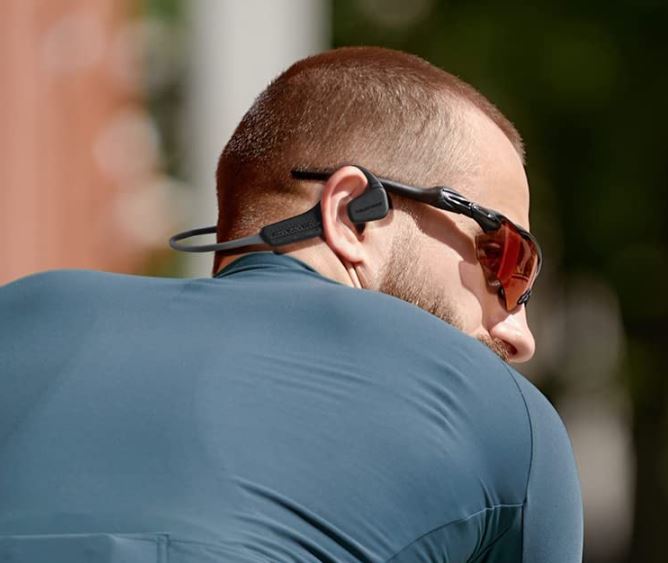
If you’re looking primarily for the best possible audio quality, check out the OneOdio Monitor 80. These are open-backed professional monitoring headphones, good enough for studio work. Needless to say, the audio is top quality. However, they only connect via a 3.5mm aux cable.
Air Conduction vs. Bone Conduction
In the past, we’ve reviewed a handful of bone conduction headphones, like the Haylou PurFree. These are similar to air conduction headphones, but not identical.
Instead of broadcasting sound through the air, they transmit vibrations to your inner ear via your skull. But what makes one type of headphone different from another? Here are a few considerations:
- Audio quality – When audio is transmitted through your skull, it doesn’t come through evenly. Different frequencies will come through more efficiently, and your audio quality will be far from what you’d expect. Even the best bone conduction headphones sound like cheap starter headphones. They’re best for podcasts and other media that don’t require great audio quality. Air conduction headphones, by comparison, can sound as good as any ordinary headphones.
- Application – Many people use bone conduction headphones because they have outer ear damage. When your outer ear is damaged, such as from a burst eardrum, you’re functionally deaf. Until your eardrum recovers, you won’t be able to hear normally. However, bone conduction headphones bypass the eardrum and transmit vibrations directly to the inner ear. This isn’t just for people with temporary injuries. People with certain kinds of deafness can also use bone conduction headphones. In those situations, air conduction headphones won’t work.
- Sound leakage – Bone conduction and air conduction headphones both leak sound. But of the two, air conduction headphones are the worst offenders. Bone conduction headphones leak less sound, and it’s harder to distinguish from the outside.
- Ergonomics – Bone conduction headphones literally vibrate your skull when they’re running. At lower volumes, this isn’t a big deal. But it can get pretty annoying when you’re listening to music at top volume. Air conduction headphones don’t rely on skull vibration to transmit audio, so this isn’t a concern.
Final Verdict
The Truefree F1 Air Open Ear Headphones are ideal workout headphones. The design and fit are very secure. Since they grip your head, they stay in place more easily than many in-ear headphones. And with physical control buttons, you won’t skip tracks or cause your music by accident.
The Bluetooth connection is excellent. If you’re lucky enough to have a Bluetooth 5.3-capable phone, you’ll have the most stable signal possible. You’ll maintain your connection even while you’re moving around. And if you use the headphones for gaming or videos, you’ll enjoy near-zero latency.
The battery life left little to be desired. No, you won’t have the ability to recharge over and over from a charging case. But with 11 hours of performance on a single charge, you’ll have plenty of power for a single day. And since you can charge the battery in just 90 minutes, you’ll never have to wait too long to refill it.
When it comes to audio quality, the F1 headphones are a bit of a mixed bag. On the one hand, the bass is weak and the volume is somewhat limited. On the other hand, you get plenty of frequency response and a wide soundstage. Whether or not the open design is what you need will depend on your lifestyle.
Meet Ry, “TechGuru,” a 36-year-old technology enthusiast with a deep passion for tech innovations. With extensive experience, he specializes in gaming hardware and software, and has expertise in gadgets, custom PCs, and audio.
Besides writing about tech and reviewing new products, he enjoys traveling, hiking, and photography. Committed to keeping up with the latest industry trends, he aims to guide readers in making informed tech decisions.

